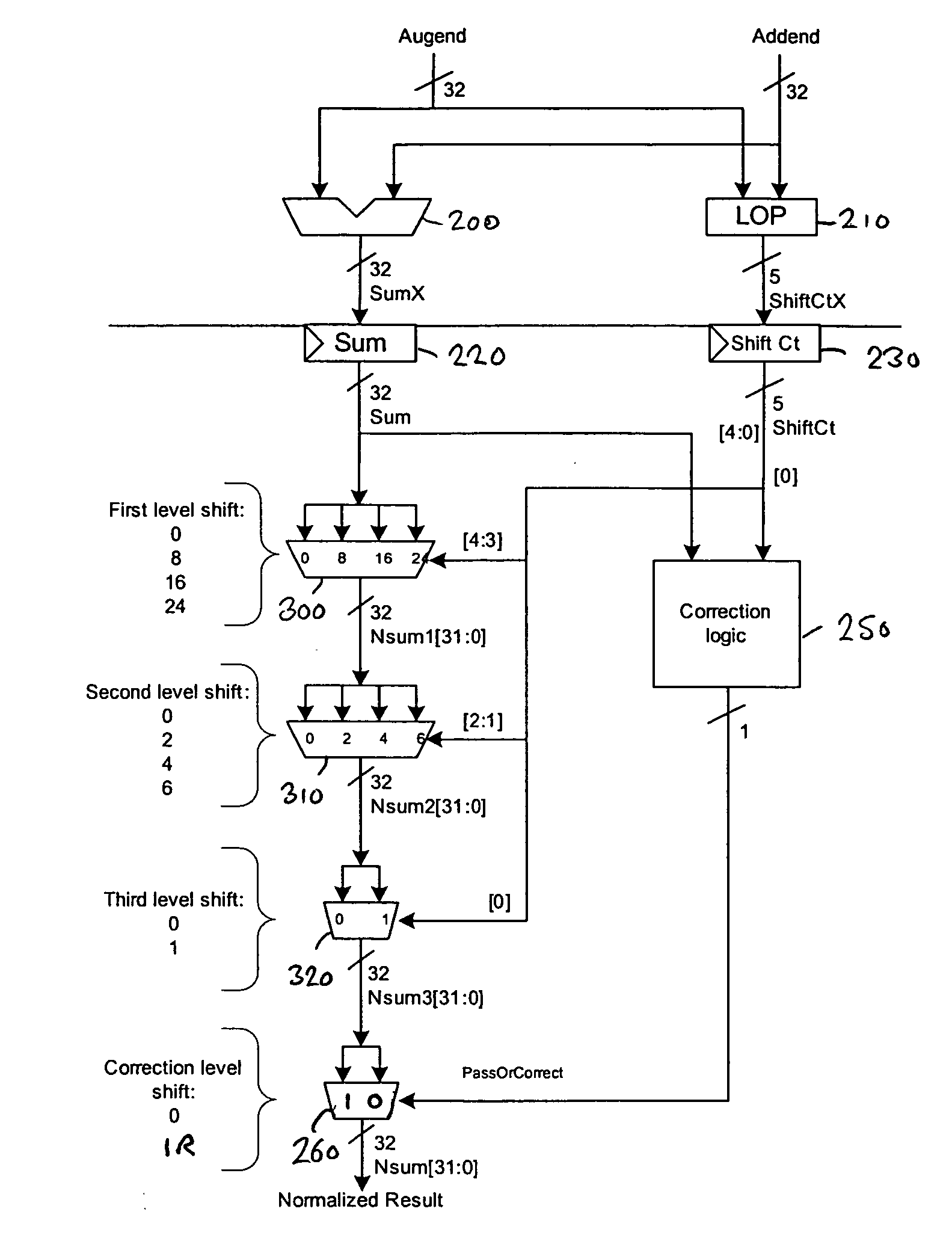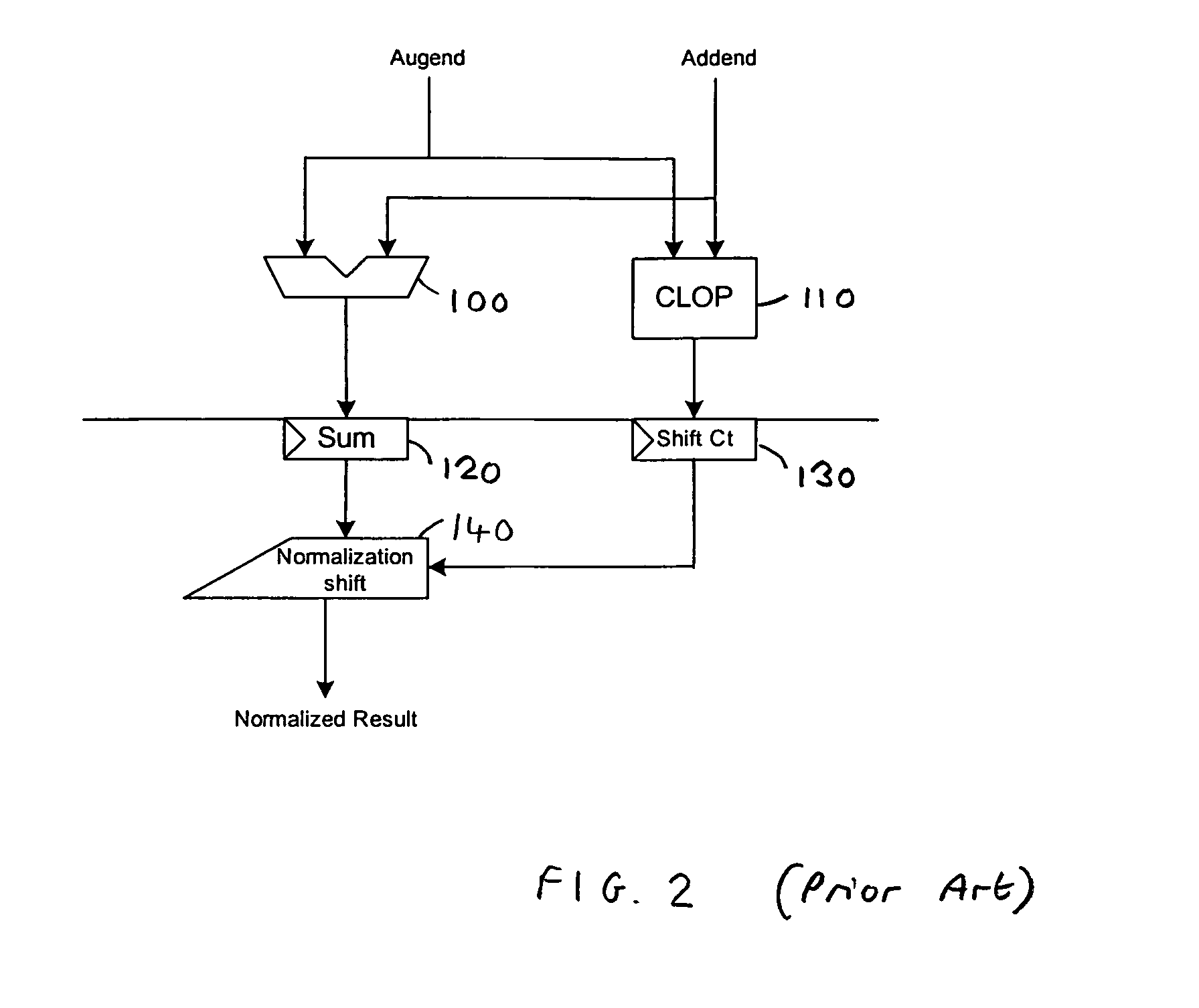Data processing apparatus and method for normalizing a data value
a data value and data processing technology, applied in the field of data processing apparatus and method for normalizing a data value, can solve the problems of inability to generate normalized data, high implementation cost, and inability to meet the needs of data conversion, so as to avoid complexity, improve timing, and improve the effect of implementation efficiency
- Summary
- Abstract
- Description
- Claims
- Application Information
AI Technical Summary
Benefits of technology
Problems solved by technology
Method used
Image
Examples
Embodiment Construction
[0046]FIG. 4 is a block diagram of a data processing apparatus in accordance with one embodiment of the present invention, this apparatus being used to add first and second n-bit significands of two floating point operands in order to produce an n-bit normalized result. If for the sake of illustration, it is assumed that the input operands are single precision floating point operands, each operand will consist of a 1-bit sign value, an 8-bit exponent value and 23-bit fraction value. The 23-bit fraction value will be converted into a 24-bit significand and the 24-bit significands from both floating point operands are input to the apparatus of FIG. 4 as the augend and addend, respectively. For double precision floating point operands the significands will be 53 bits in length.
[0047] Within a data processing apparatus, it is known to adopt two split data paths for performing floating point additions, referred to as the far path and the near path. The near path is used for unlike signe...
PUM
 Login to View More
Login to View More Abstract
Description
Claims
Application Information
 Login to View More
Login to View More - R&D
- Intellectual Property
- Life Sciences
- Materials
- Tech Scout
- Unparalleled Data Quality
- Higher Quality Content
- 60% Fewer Hallucinations
Browse by: Latest US Patents, China's latest patents, Technical Efficacy Thesaurus, Application Domain, Technology Topic, Popular Technical Reports.
© 2025 PatSnap. All rights reserved.Legal|Privacy policy|Modern Slavery Act Transparency Statement|Sitemap|About US| Contact US: help@patsnap.com



